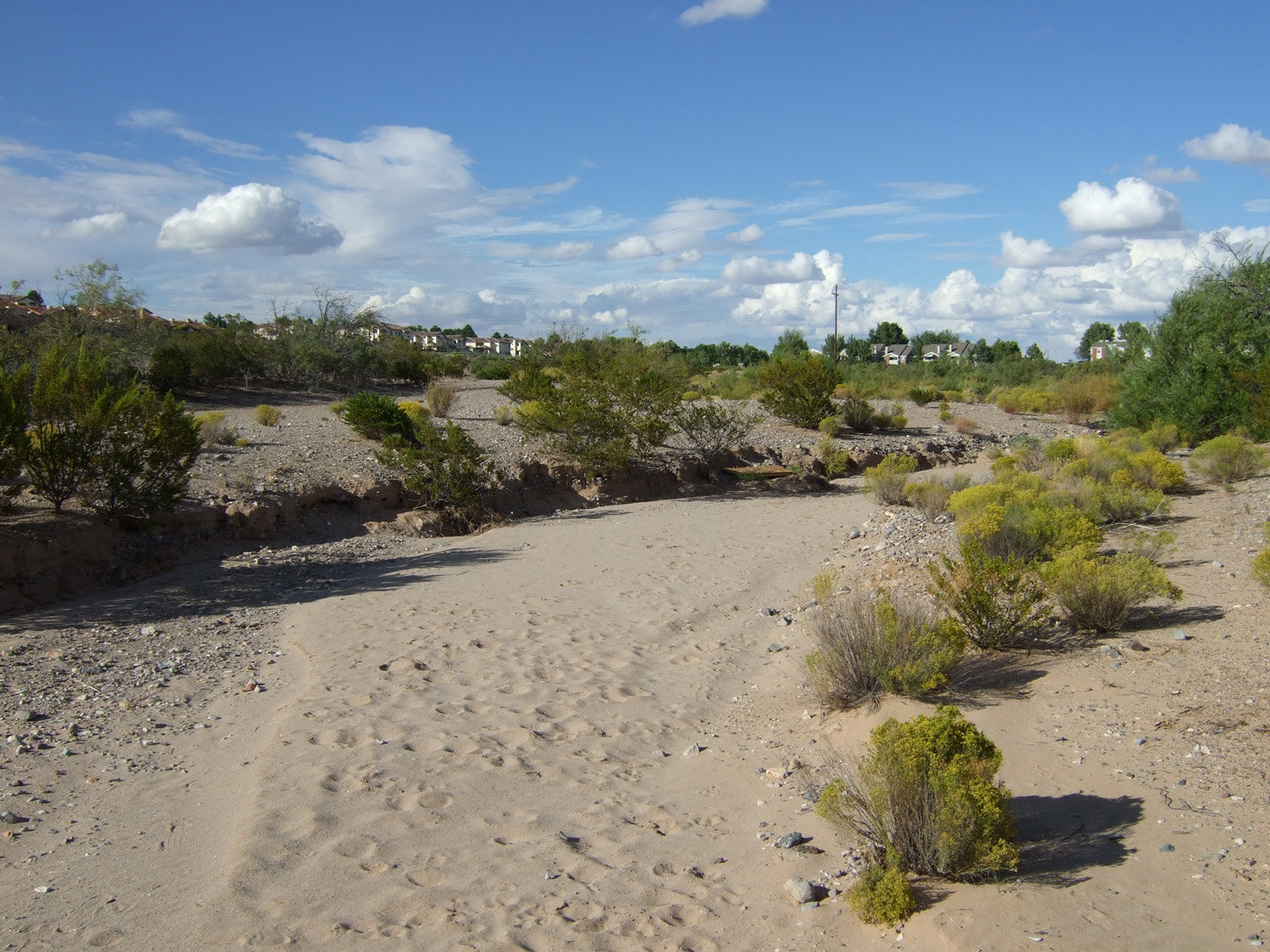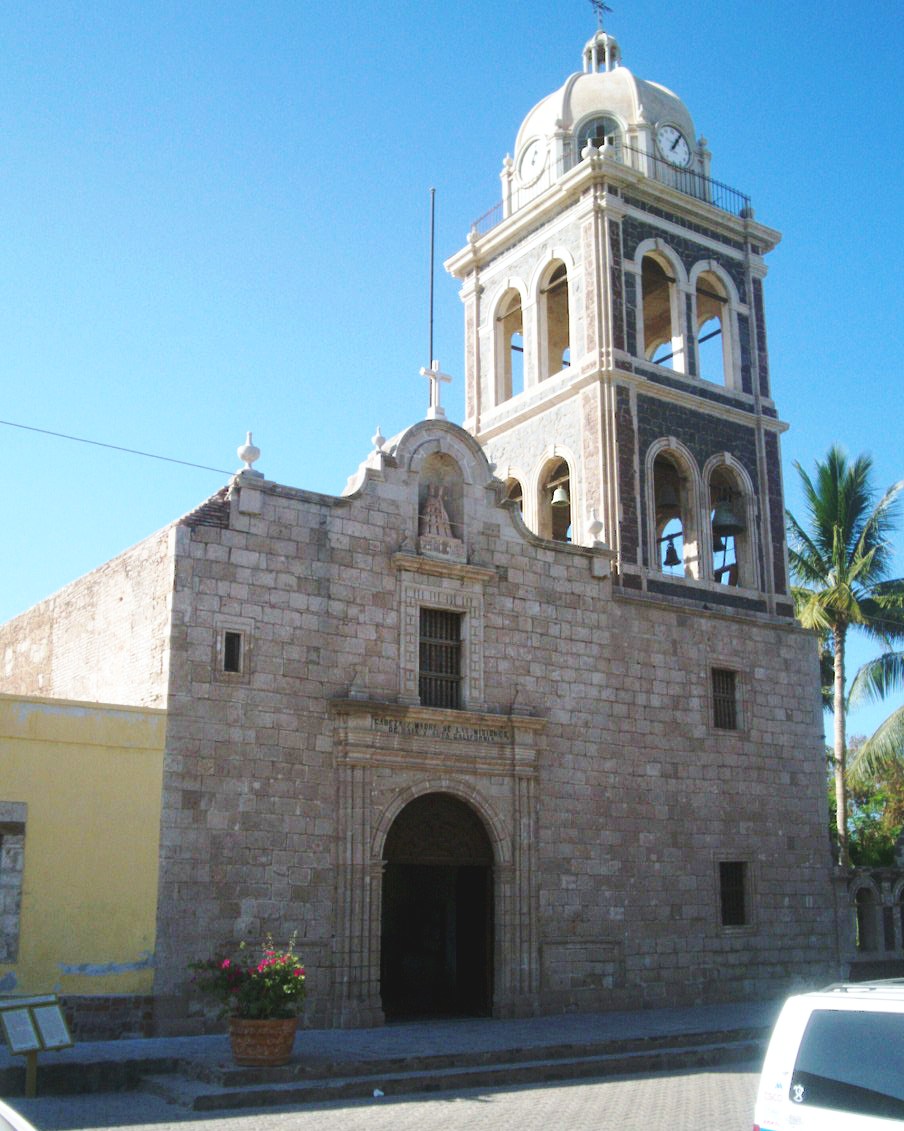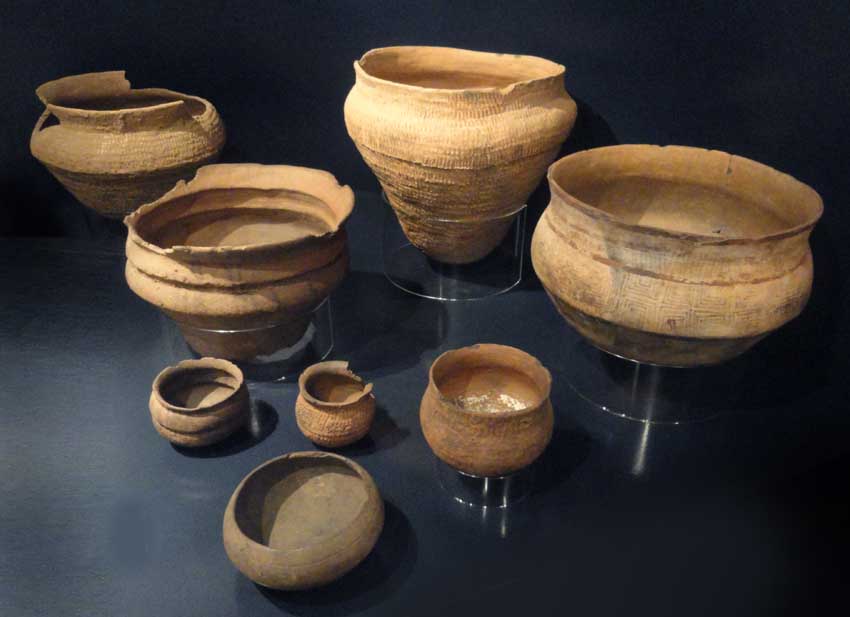|
Bohán People
The Bohán were one of the native nations of Uruguay. A minor tribe, they were related to and eventually subsumed by the Charrúa people. They were also related to the Yaro people. The Bohanes lived on the banks of the Uruguay river from the Río Negro to the Quaraí River in what is modern-day Uruguay, near the modern border with Brazil. They were especially concentrated in the place of the modern reservoir of the Salto Grande Dam (which was not flooded at the time). According to some scholars, the tribe originated from the Entre Ríos Province in modern-day Argentina, and some of its members were active there regardless. Before the arrival of the Charrúas, the Bohán used as weapons the sling, the spear, and the dart. After its merger with the Charruas, they also began use of the bow and the bola. In 1715, a force of 1500 Spanish-allied Guaraní from the Yapeyú Jesuit reduction conducted a notable punitive reprisal raid on the Bohán, along with the Yaros and Charrúa. ... [...More Info...] [...Related Items...] OR: [Wikipedia] [Google] [Baidu] |
Uruguay
Uruguay (; ), officially the Oriental Republic of Uruguay ( es, República Oriental del Uruguay), is a country in South America. It shares borders with Argentina to its west and southwest and Brazil to its north and northeast; while bordering the Río de la Plata to the south and the Atlantic Ocean to the southeast. It is part of the Southern Cone region of South America. Uruguay covers an area of approximately and has a population of an estimated 3.4 million, of whom around 2 million live in the metropolitan area of its capital and largest city, Montevideo. The area that became Uruguay was first inhabited by groups of hunter–gatherers 13,000 years ago. The predominant tribe at the moment of the arrival of Europeans was the Charrúa people, when the Portuguese first established Colónia do Sacramento in 1680; Uruguay was colonized by Europeans late relative to neighboring countries. The Spanish founded Montevideo as a military stronghold in the early 18th century ... [...More Info...] [...Related Items...] OR: [Wikipedia] [Google] [Baidu] |
Bolas
Bolas or bolases (singular bola; from Spanish and Portuguese ''bola'', "ball", also known as a ''boleadora'' or ''boleadeira'') is a type of throwing weapon made of weights on the ends of interconnected cords, used to capture animals by entangling their legs. Bolas were most famously used by the gauchos, but have been found in excavations of Pre-Columbian settlements, especially in Patagonia, where indigenous peoples (particularly the Tehuelche) used them to catch 200-pound guanacos and rheas. The Mapuche and the Inca army used them in battle. Mapuche warriors used bolas in their confrontations with the Chilean Army during the Occupation of Araucanía (1861–1883). Use ''Gauchos'' used ''boleadoras'' to capture running cattle or game. Depending on the exact design, the thrower grasps the ''boleadora'' by one of the weights or by the nexus of the cords. The thrower gives the balls momentum by swinging them and then releases the ''boleadora''. The weapon is us ... [...More Info...] [...Related Items...] OR: [Wikipedia] [Google] [Baidu] |
Indigenous Peoples In Uruguay
Indigenous peoples in Uruguay or Native Uruguayans, are the peoples who lived in the modern state of Uruguay. Because of colonial practices, disease and active exclusion, only a very small share of the population is aware or knows of indigenous ancestry. Scholars do not agree about the first settlers in what is now Uruguay; but there is evidence that there was human presence some 10,000 years BCE. Indigenous Uruguayans disappeared in the 1830s and with the exception of the Guaraní, little is known about these peoples and even less about their genetic characteristics.The Charrúa peoples were perhaps the most-talked-about indigenous people of the Southern Cone in what was known as the Banda Oriental.Burford, Tim''Uruguay.''Bucks, UK: Bradt Travel Guides, 2011. . Other significant tribes were the Minuane, Yaro, Güenoa, Chaná, Bohán, Arachán. Languages once spoken in the area include Charrúa, Chaná, Güenoa, Guaraní. A 2005 genetic study showed 38% of Uruguayans had ... [...More Info...] [...Related Items...] OR: [Wikipedia] [Google] [Baidu] |
Arroyo (creek)
An arroyo (; from Spanish arroyo , "brook"), also called a wash, is a dry creek, stream bed or gulch that temporarily or seasonally fills and flows after sufficient rain. Flash floods are common in arroyos following thunderstorms. '' Wadi'' (Arabic) is used in North Africa and Western Asia for similar landforms. The desert dry wash biome is restricted to the arroyos of the southwestern United States. Arroyos provide a water source to desert animals. Types and processes Arroyos can be natural fluvial landforms or constructed flood control channels. The term usually applies to a sloped or mountainous terrain in xeric and desert climates. In addition: in many rural communities arroyos are also the principal transportation routes; and in many urban communities arroyos are also parks and recreational locations, often with linear multi-use bicycle, pedestrian, and equestrian trails. Flash flooding can cause the deep arroyos or deposition of sediment on flooded lands. ... [...More Info...] [...Related Items...] OR: [Wikipedia] [Google] [Baidu] |
Francisco García Piedrabuena
Francisco is the Spanish and Portuguese form of the masculine given name '' Franciscus''. Nicknames In Spanish, people with the name Francisco are sometimes nicknamed " Paco". San Francisco de Asís was known as ''Pater Comunitatis'' (father of the community) when he founded the Franciscan order, and "Paco" is a short form of ''Pater Comunitatis''. In areas of Spain where Basque is spoken, " Patxi" is the most common nickname; in the Catalan areas, "Cesc" (short for Francesc) is often used. In Spanish Latin America and in the Philippines, people with the name Francisco are frequently called " Pancho". " Kiko" is also used as a nickname, and " Chicho" is another possibility. In Portuguese, people named Francisco are commonly nicknamed "Chico" (''shíco''). This is also a less-common nickname for Francisco in Spanish. People with the given name * Pope Francis is rendered in the Spanish and Portuguese languages as Papa Francisco * Francisco Acebal (1866–1933), Spanish w ... [...More Info...] [...Related Items...] OR: [Wikipedia] [Google] [Baidu] |
Maestre De Campo
''Maestre de campo'' was a rank created in 1534 by the Emperor Carlos V, inferior in rank only to the ''capitán general'' and acted as a chief of staff. He was chosen by the monarch in the Council of State, and commanded a ''tercio''. Their powers were similar to those of the old marshals of the Kingdom of Castile: he had the power to administer justice and to regulate the food supply. His personal guard consisted of eight German halberdiers, paid by the king, who accompanied him everywhere. Immediately inferior in the chain of command was the '' sargento mayor''. One of the most famous ''maestre de campo'' was Julian Romero, a common soldier who reached the rank of ''maestre de campo'' and that brought victory to the Spanish ''tercio''s in the battles of San Quintín and Gravelines. In the overseas colonies of the Spanish Empire a governor held the rank of ''capitán general'' over his local forces and would appoint his ''maestre de campo''. Notable Maestres de Campo S ... [...More Info...] [...Related Items...] OR: [Wikipedia] [Google] [Baidu] |
Jesuit Reduction
Reductions ( es, reducciones, also called ; , pl. ) were settlements created by Spanish rulers and Roman Catholic missionaries in Spanish America and the Spanish East Indies (the Philippines). In Portuguese-speaking Latin America, such reductions were also called ''aldeias''. The Spanish and Portuguese relocated, forcibly in many cases, indigenous inhabitants (''Indians'' or ''Indios'') of their colonies into urban settlements modeled on those in Spain and Portugal. The word "reduction" can be understood wrongly as meaning "to reduce." Rather, the 1611 Spanish dictionary by Sebastián de Covarrubias defines ''reducción'' (reduction) as "to convince, persuade, or to order." The goals of reductions were to concentrate indigenous people into settled communities and to convert the Indians to Christianity and impose European culture. The concentration of the indigenous into towns facilitated the organization and exploitation of their labor. Reductions could be either religio ... [...More Info...] [...Related Items...] OR: [Wikipedia] [Google] [Baidu] |
Guaraní People
Guarani are a group of culturally-related indigenous peoples of South America. They are distinguished from the related Tupi by their use of the Guarani language. The traditional range of the Guarani people is in present-day Paraguay between the Paraná River and lower Paraguay River, the Misiones Province of Argentina, southern Brazil once as far east as Rio de Janeiro, and parts of Uruguay and Bolivia. Although their demographic dominance of the region has been reduced by European colonisation and the commensurate rise of mestizos, there are contemporary Guarani populations in these areas. Most notably, the Guarani language, still widely spoken across traditional Guarani homelands, is one of the two official languages in Paraguay, the other one being Spanish. The language was once looked down upon by the upper and middle classes, but it is now often regarded with pride and serves as a symbol of national distinctiveness. The Paraguayan population learns Guarani both informall ... [...More Info...] [...Related Items...] OR: [Wikipedia] [Google] [Baidu] |
Bow And Arrow
The bow and arrow is a ranged weapon system consisting of an elasticity (physics), elastic launching device (bow) and long-shafted projectiles (arrows). Humans used bows and arrows for hunting and aggression long before recorded history, and the practice was common to many prehistoric cultures. They were important weapon of war, weapons of war from ancient history until the early modern period, where they were rendered increasingly obsolete by the development of the more powerful and accurate firearms. Today, bows and arrows are mostly used for bowhunting, hunting and Modern competitive archery, sports. Archery is the art, practice, or skill of using bows to shooting, shoot arrows.Paterson ''Encyclopaedia of Archery'' p. 17 A person who shoots arrows with a bow is called a bowman or an archer. Someone who makes bows is known as a bowyer,Paterson ''Encyclopaedia of Archery'' p. 31 someone who makes arrows is a fletching, fletcher,Paterson ''Encyclopaedia of Archery'' p. 56 and som ... [...More Info...] [...Related Items...] OR: [Wikipedia] [Google] [Baidu] |
Renzo Pi Hugarte
Renzo Wifredo Pi Hugarte (Durazno, 23 November 1934 – Montevideo, 15 August 2012) was a Uruguayan scholar, anthropologist, professor, historian and writer. Together with Daniel Vidart he is considered one of the "founding fathers" of anthropology in Uruguay. Works * El Uruguay Indígena', Nuestra Tierra, Montevideo, 1969 * El legado de los inmigrantes' (with Daniel Vidart), Nuestra Tierra, Montevideo, 1969-1970 * ''Los indios del Uruguay'', 1973 * ''Los cultos de posesión en el Uruguay'', Banda Oriental Banda Oriental, or more fully Banda Oriental del Uruguay (Eastern Bank), was the name of the South American territories east of the Uruguay River and north of Río de la Plata that comprise the modern nation of Uruguay; the modern state of Rio Gr ..., 1995 * ''Historias de "aquella gente gandul" - Españoles y criollos vs. indios en la Banda Oriental'', 1999 References 1934 births 2012 deaths Uruguayan people of Catalan descent Uruguayan people of Basque descent Peop ... [...More Info...] [...Related Items...] OR: [Wikipedia] [Google] [Baidu] |
Entre Ríos Province
Entre Ríos (, "Between Rivers") is a central province of Argentina, located in the Mesopotamia region. It borders the provinces of Buenos Aires (south), Corrientes (north) and Santa Fe (west), and Uruguay in the east. Its capital is Paraná (250,000 inhabitants), which lies on the Paraná River, opposite the city of Santa Fe. Together with Córdoba and Santa Fe, since 1999, the province is part of the economic-political association known as the Center Region. History The first inhabitants of the area that is now Entre Ríos were the Charrúa and Chaná who each occupied separate parts of the region. Spaniards entered in 1520, when Rodríguez Serrano ventured up the Uruguay River searching for the Pacific Ocean. The first permanent Spanish settlement was erected in the current La Paz Department at the end of the 16th century. As governor of Asunción first and then of Buenos Aires, Hernandarias conducted expeditions to Entre Ríos unexplored lands. Juan de Garay, ... [...More Info...] [...Related Items...] OR: [Wikipedia] [Google] [Baidu] |
Salto Grande Dam
The Salto Grande Dam is a large hydroelectric dam on the Uruguay River, located between Concordia, Argentina, and Salto, Uruguay; thus shared between the two countries. The construction of the dam began in 1974 and was completed in 1979. Power is generated by fourteen Kaplan turbines, totaling the installed capacity to . The dam passes approximately of water per second, compared to the current average flow of the Uruguay River at . The reservoir has a total area of , while its maximum dimensions are . Gallery File:Salto Grande dam.JPG, The Salto Grande dam File:Salto Grande turbine room.JPG, Inside the generator hall File:Puente Salto Grande.jpg, Salto Grande Bridge over the dam See also * List of conventional hydroelectric power stations * List of power stations in Argentina * Salto Grande Waterfall * Salto Grande Bridge The Salto Grande Bridge is a road and railroad bridge that crosses the Uruguay River and joins Argentina and Uruguay. It is built on top of the S ... [...More Info...] [...Related Items...] OR: [Wikipedia] [Google] [Baidu] |





.jpg)